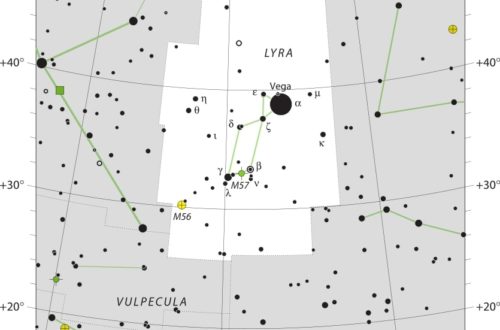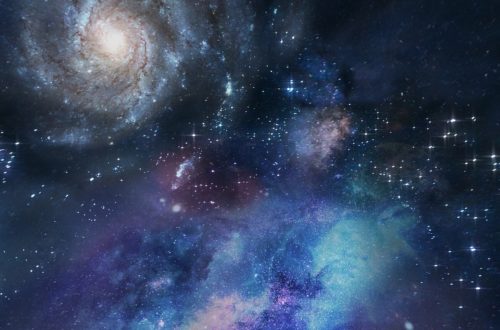Stargazing Calendar for November 2023
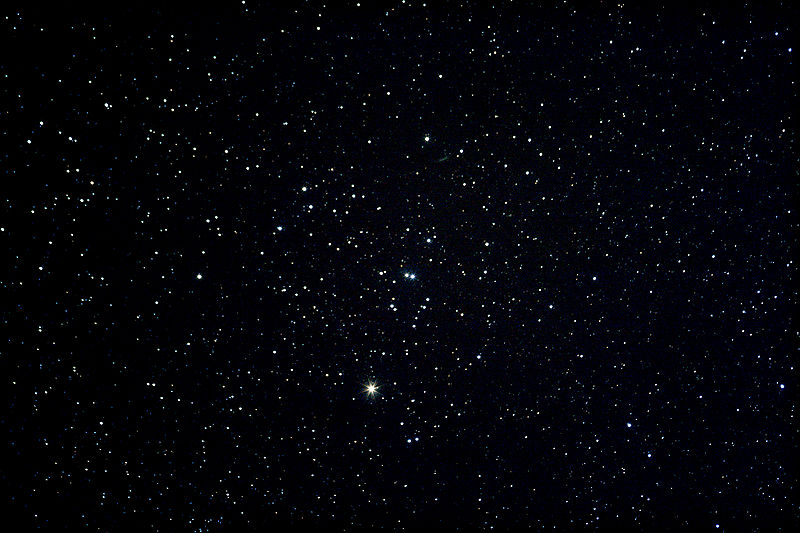
Looking for the November 2025 stargazing calendar?
As November unfurls its celestial tapestry, the universe offers a captivating display for avid stargazers and astronomers alike.
This month, our cosmic theater hosts a series of meteor showers, each with its own unique tale. Planets, too, take their positions in the grand celestial ballet, with Jupiter poised for a remarkable opposition, showcasing its splendor at its closest approach to Earth.
Join us on a journey through the November night sky, where cosmic phenomena unfold in a mesmerizing dance of celestial bodies.
Would you like to be notified of stargazing events?
Summary of Meteor Showers in November 2023
- Southern Taurids: Start on September 10; peak on October 10; end on November 20.
- Orionids: Start on October 2; peak on October 22; end on November 7.
- Northern Taurids: Start on October 20; peak on November 12; end on December 10.
- Leonids: Start on November 6; peak on November 17; end on November 30.
- α-Monocerotids: Start on November 15; peak on November 21; end on November 25.
- November Orionids: Start on November 13; peak on November 28; end on December 6.
- Phoenicids: Start on November 28; peak on December 2; end on December 9.
Summary of Conjunctions in November 2023
- Conjunction of the Moon and Venus in Virgo on November 9.
- Conjunction of the Moon and Mercury in Scorpius on November 14.
- Conjunction of the Moon and Saturn in Aquarius on November 20.
- Conjunction of the Moon and Jupiter in Aries on November 25.
November 1: Jupiter at perigee
The perigee is the point in the orbit of Jupiter at which it is nearest to the Earth. It will pass as close as 3.98 AU of us and reach a maximum brightness of apparent magnitude -2.9. Look in the constellation of Aries. The Moon will be 18 days old or waning gibbous.
At every perigee there is also an opposition at nearly the same time. Jupiter will be at opposition on November 3.

November 3: Jupiter at opposition
After reaching perigee on November 1st, Jupiter will be at opposition on the 3rd. It will be opposite to the Sun in the sky, reaching its highest point in the sky around midnight local time, regardless of where you are in the world. Look in the constellation of Aries. The Moon will be 20 days old or waning gibbous.
The time around Jupiter’s perigee and opposition is the best opportunity to observe Jupiter, because it will be at its brightest with an apparent magnitude of -2.9.
November 5: Asteroid 18 Melpomene at opposition
Asteroid 18 Melpomene will reach opposition, when it lies opposite to the Sun in the sky. It will reach the highest point in the sky around midnight local time.
On this occasion, Melpomene will pass within 0.863 AU of Earth and reach a peak brightness of magnitude 8.0. Unfortunately even at the peak, this asteroid will be too faint to observe with the naked eye. You will need at least a 4 inch telescope, which you should point to the constellation of Eridanus. The Moon will be a waning crescent at 22 days old.
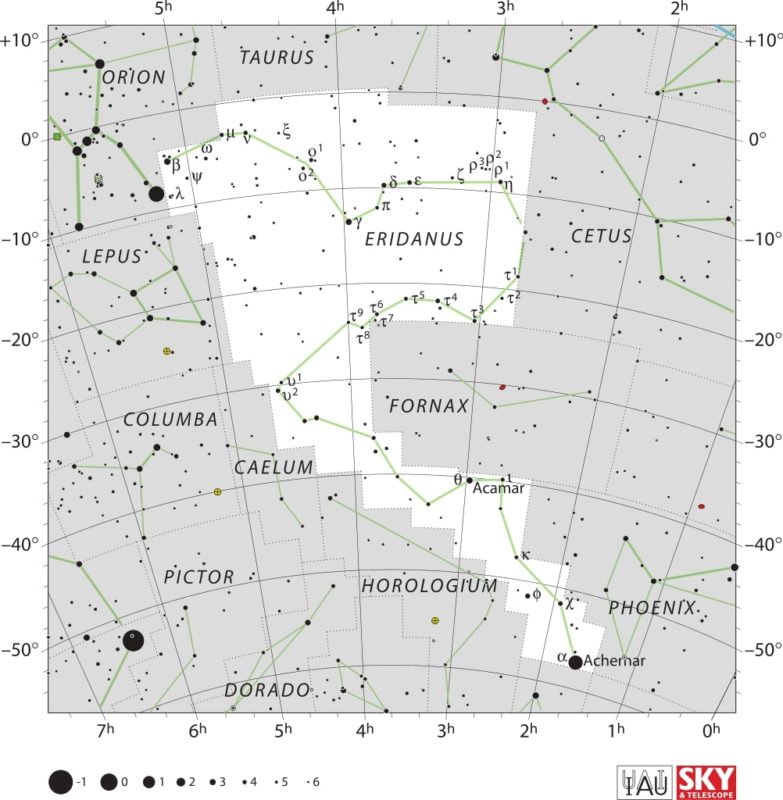
Melpomene was discovered in 1852 by John Russell Hind, who named it after Melpomenē, the Muse of tragedy in Greek mythology.
It is a large and bright asteroid located in the main asteroid belt with a mean diameter of about 140 km. It orbits the Sun at 2.296 AU (semi-major axis) which takes 3.48 years to complete. (Source: NASA JPL Small-Body Database Lookup for 18 Melpomene)
Interestingly, during an occultation of a star by Melpomene in 1978, a moon with a diameter of at least 37 km was detected. Unfortunately this finding hasn’t been successfully confirmed, so it is uncertain if this moon exists.
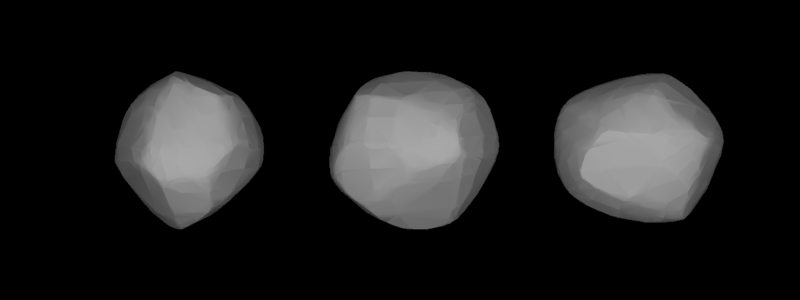
November 9: Conjunction of the Moon and Venus
The Moon and Venus will reach conjunction passing 1°00′ withing each other while sharing the same right ascension.
Shortly after the conjunction, when the two bodies no longer share the same right ascension, they will get even closer to each other at only 53.1 arcminutes of each other.
Both will be visible in the constellation of Virgo, with the Moon at apparent magnitude -10.6, and Venus at -4.3. The Moon will be a 26 days old waning crescent.
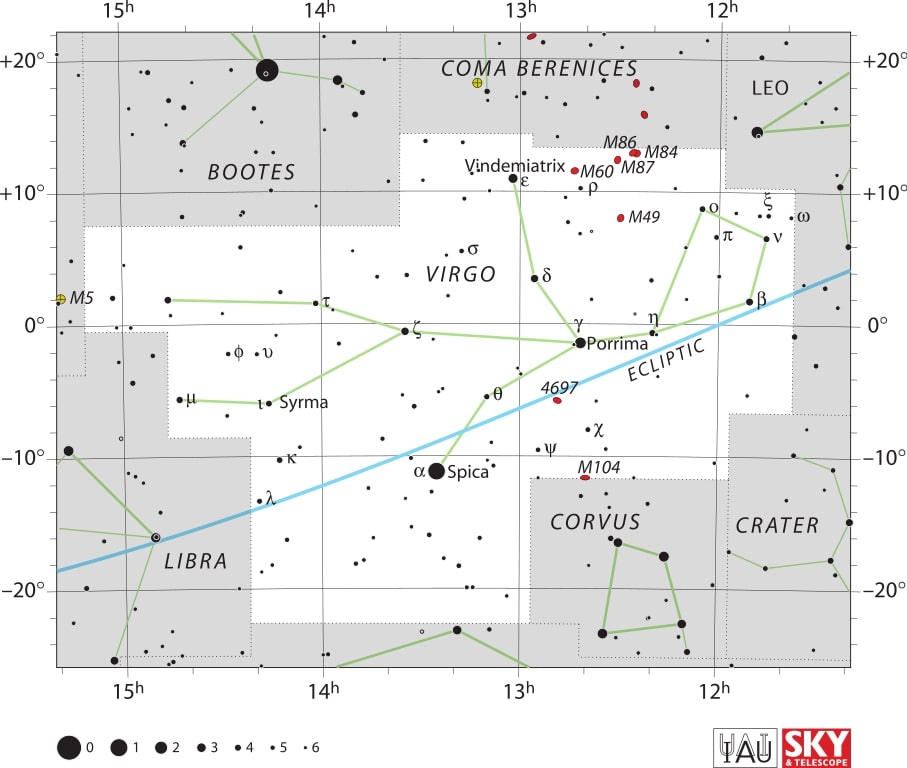
November 10: Comet C/2023 H2 (Lemmon) at perigee
The recently discovered comet C/2023 H2 (Lemmon) will reach perigee (closest approach to the Earth in its orbit) at a distance of of 0.19 AU. At about the same time the comet will reach peak brightness, so don’t miss this opportunity!
With an apparent magnitude of 5.3, this comet can be observed with standard binoculars. Look for it in the constellation of Hercules. Thankfully, the Moon will not interfere with observations because it will be a 27 days old thin waning crescent.
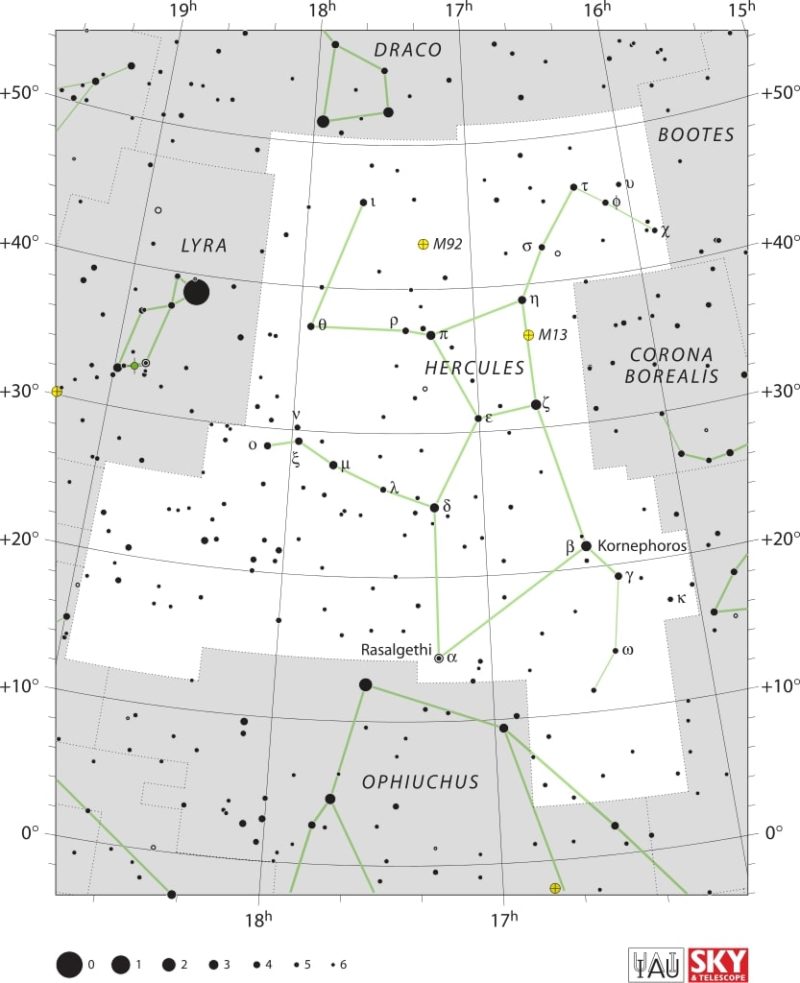
November 12: Northern Taurid meteor shower peak
The Northern Taurids are a small meteor shower that will have an average of only 5 meteors per hour during the peak if the viewing conditions are ideal. Given that the Moon will be 29 days old and thus just a day away from a new moon, those conditions will be quite close to ideal.
Some meteors can also be seen between October 20 and December 10. They will appear to radiate from the constellation of Taurus at an average speed of 29 km/s.
The Northern Taurid meteor shower originates from debris left by asteroid 2004 TG10. This asteroid of the Apollo group is an near-Earth object and potentially at risk of colliding with the Earth. It is estimated to be 1.3 km in diameter and it is theorized that this asteroid could be a fragment of comet Encke.

November 13: Uranus at opposition
Uranus will reach a point opposite to the Sun in the sky, known as an opposition. This will happen around midnight local time, regardless of where in the world you are observing from.
At around the same time Uranus will also reach perigee or closest approach to Earth at a distance of 18.63 AU. This would be the best time to observe the ice giant.
With an apparent magnitude of 5.6, Uranus can be observed with a standard pair of binoculars. Point them in the Aries constellation. (For the constellation map, scroll to the top as it is already shown when Jupiter is at perigee.) There will be no interference from the Moon because it will reach the new moon phase on this day.
November 14: Conjunction of the Moon and Mercury
The Moon and Mercury will pass within 1°39′ of each other while sharing the same right ascension, in what is termed a conjunction.
The two celestial bodies will be in the constellation of Scorpius, with the Moon at apparent magnitude -8.3, and Mercury at -0.4. The Moon will be a very thin waxing crescent one day old.
As Mercury is always close to the Sun, be very careful to not look directly at the Sun, or worse, point binoculars or a telescope at it. This can gravely damage your eyes, even resulting in permanent blindness.

November 17: Leonid meteor shower peak
The Leonids are a medium sized meteor shower with an average of 15 meteors during the peak if viewing conditions are optimal. Those conditions should be rather good since the Moon will be only 5 days old as a waxing crescent.
Some meteors may also be spotted between November 6 and November 30. They will appear to radiate from the constellation of Leo at the fast speed of 71 km/s on average.
The parent body of the Leonid meteor shower has been identified as comet 55P/Tempel–Tuttle, a retrograde periodic comet with an orbital period of 33 years.
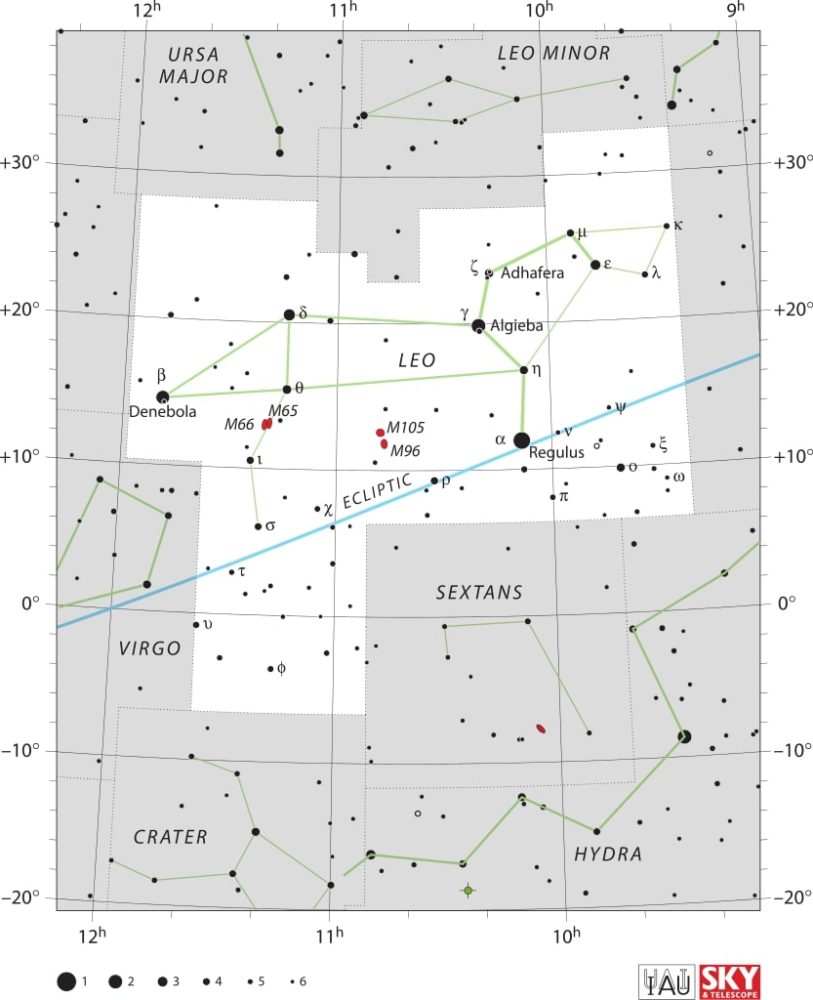
November 20: Conjunction of the Moon and Saturn
The Moon and Saturn will reach conjunction by passing at 2°43′ from each other while sharing the same right ascension. The pair will be too far apart to be visible together using a telescope, but they will be viewable to the naked eye or with a pair of binoculars.
Shortly after the conjunction, the Moon and Saturn will pass even closer to each other at 2°29′ during the appulse (close approach), but no longer sharing the same right ascension.
The two bodies will meet in the constellation of Aquarius with an apparent magnitude of -12.0 for the Moon and 0.6 for Saturn. The Moon will be waxing gibbous at 7 days old.

November 21: α-Monocerotid meteor shower peak
The Alpha Monocerotids are a variable rate meteor shower. Every few decades it can produce an outburst of as much as 1000 meteors per hour at the peak. Sadly, this year’s peak won’t be one of those cases. We can only expect a few (a single digit number) of them per hour. The Moon will interfere somewhat as it is 9 days old and waxing gibbous at the time.
Some meteors may also be seen between November 15 and November 25 radiating from the constellation of Monoceros at the high speed of 65 km/s on average.
The meteors originate from material left behind by comet C/1917 F1 (Mellish), a Halley-type comet with an orbital period of 143 years.
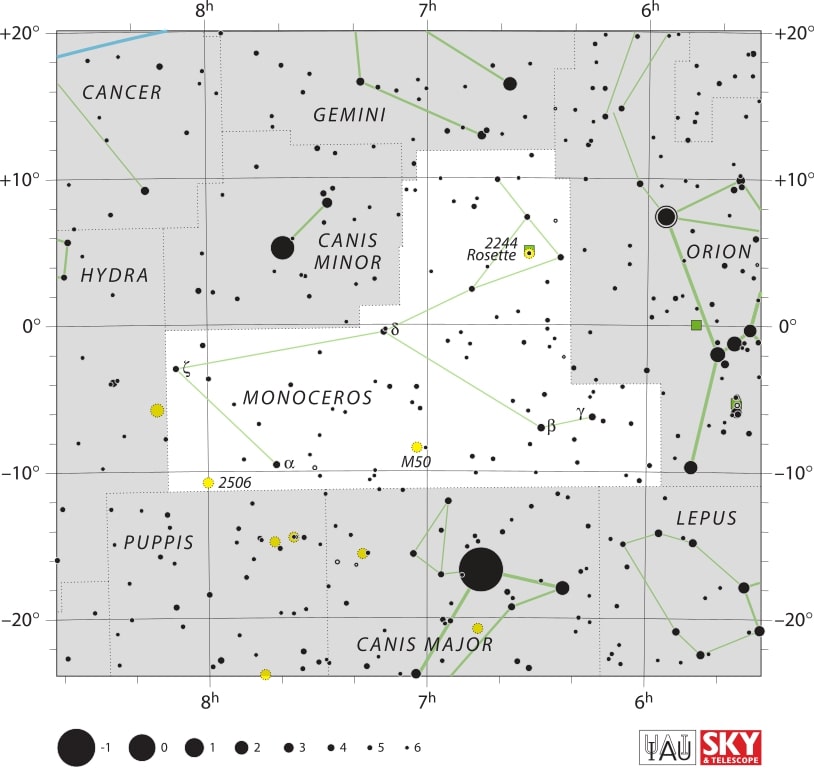
November 25: Conjunction of the Moon and Jupiter
The Moon and Jupiter will be at conjunction by sharing the same right ascension and passing within 2°46′ of each other.
At around the same time the two bodies will also make a close approach (appulse) reaching 2°31′ from each other, but not sharing the same right ascension.
The two celestial bodies will meet in the constellation Aries with the Moon at apparent magnitude of -12.7 and Jupiter at -2.8. (For the constellation map, scroll to the top as it is already shown when Jupiter is at perigee.) The Moon will be waxing gibbous and 12 days old.
November 26: Close approach of the Moon and the Pleiades
The Moon and the Pleiades (also known as M45 or Messier 45) will make a close approach, passing within 1°00′ of each other. They will be too far apart to fit within the field of view of a telescope, but you can see them with the naked eye or through a pair of binoculars.
Both objects will be in the constellation of Taurus with the Moon being at apparent magnitude -12.7; and M45 at 1.3. (For the constellation map, scroll up to November 12 as it is already shown for the Northern Taurid meteor shower.) The Moon will be 13 days old waning gibbous, only a day away from a full moon.
November 28: November Orionid meteor shower peak
The November Orionids are the final meteor shower to peak this month. It’s a small one with only 3 meteors per hour on average during the peak, with ideal viewing conditions. Unfortunately the viewing conditions will not be ideal because of the Moon’s interference. It will be 15 days old waning gibbous, only a day after the full moon.
Some meteors may also be seen between November 13 and December 6 radiating from the constellation of Orion at the speed of 44 km/s on average. The parent body for this meteor shower is as of yet unknown.
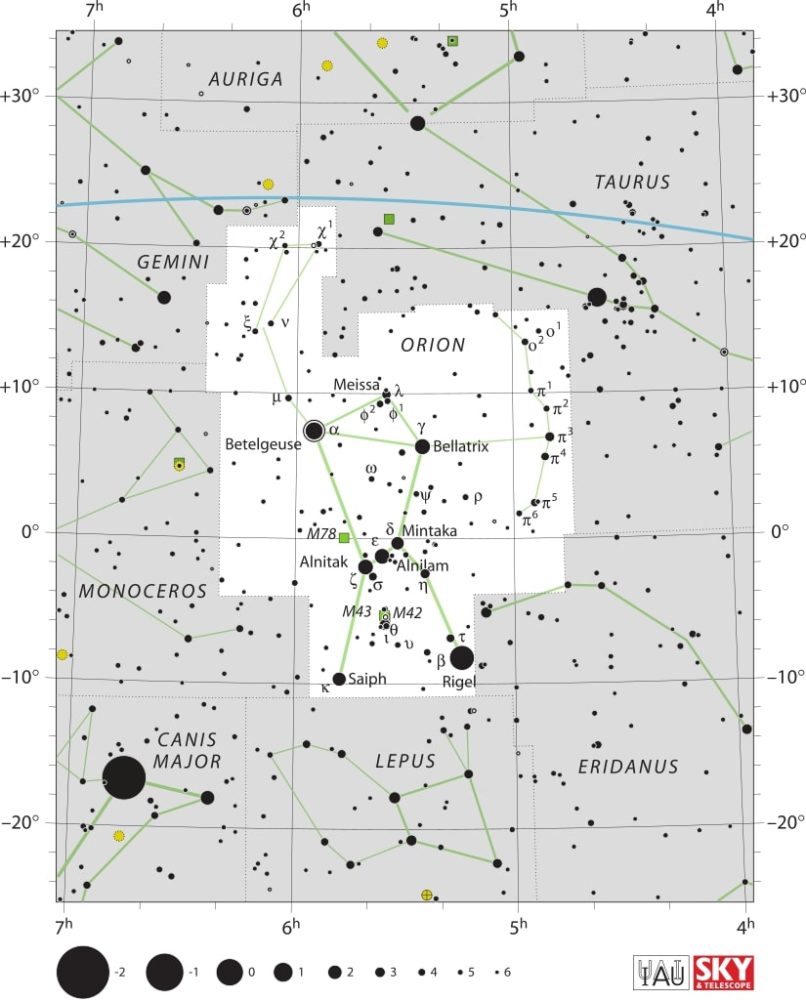
November 28: Hyades cluster at its highest point in the sky
The Hyades (also known as Caldwell 41, Collinder 50, or Melotte 25) is the nearest open cluster at only 153 light-years away. The cluster of stars will reach its highest point in the sky at around midnight local time.
With an apparent magnitude of 1.0, the Hyades can be seen with the naked eye, but for better results I would recommend at least a pair of standard binoculars. Unfortunately the Moon will be interfering with observation because it will be waning gibbous at 15 days old, so only a day after a full moon.
The Hyades cluster is a part of the Taurus constellation, of which it forms the head. It has been known since antiquity, several thousands of years BC. Along with the Pleiades, the Hyades form the Golden Gate of the Ecliptic. The sun, moon, and planets all move along the ecliptic, and as a result, all seven of these bodies routinely pass through the Golden Gate of the Ecliptic. (For the constellation map, scroll up to November 12 as it is already shown for the Northern Taurid meteor shower. You can also see a photo of the Hyades at the top of the article as the featured image.)
Moon Phases in November 2023
As you know, the Moon has a big impact on the visibility of celestial bodies in the night sky. So here are the Moon’s phases for this month:

Positions of the Planets in November 2023
Mercury: The closest planet to the Sun can be seen at dawn and dusk travelling across the constellation of Libra. This planet, being the closest to the Sun, will appear to move quickly in the night sky and its position will change in the following weeks.
Venus: The sister planet can be seen travelling across the constellation of Leo. Just like Mercury, Venus can only be seen at dawn and dusk.
Mars: The red planet can be seen in the constellation of Libra.
Jupiter: The gas giant is visible in the constellation of Aries. Jupiter can easily be spotted with the naked eye, even in highly illuminated cities.
Saturn: The ringed giant can be seen with the naked eye in the constellation of Aquarius.
Uranus: The ice giant can be seen in the constellation of Aries with the use of a telescope.
Neptune: The blue giant requires a telescope pointed in the constellation of Pisces in order to be seen.
Positions of Dwarf Planets and Large Asteroids in November 2023
Ceres: The asteroid belt’s lone dwarf planet can be seen in the constellation of Libra with the help of a telescope.
Vesta: This large asteroid can be seen in the constellation of Gemini with a telescope.
Pallas: The asteroid can be observed with a telescope in the constellation of Virgo.
Pluto: This distant dwarf planet can be found in the constellation of Sagittarius with the help of a large telescope.
Major astronomical events next month – December 2023
- December 2 – Phoenicid meteor shower peak.
- December 6 – December φ-Cassiopeid meteor shower peak.
- December 7 – Puppid-Velid meteor shower peak.
- December 8 – Monocerotid meteor shower peak.
- December 11 – σ-Hydrid meteor shower peak.
- December 14 – Geminid meteor shower peak.
- December 15 – Comae Berenicid meteor shower peak.
- December 20 – December Leonis Minorid meteor shower peak.
- December 21 – Asteroid 4 Vesta at opposition.
- December 21 – December solstice.
- December 22 – Ursid meteor shower peak.
- December 22 – Asteroid 9 Metis at opposition.
- December 27 – Asteroid 5 Astraea at opposition.
Conclusion
This month, our night sky becomes a celestial stage with a dazzling lineup. Meteor showers like Orionids and Leonids will light up the skies. Jupiter and Uranus will shine at opposition. Lunar encounters with Venus, Saturn, Jupiter, and the Pleiades will offer captivating displays. Keep an eye on the Hyades cluster.
Enjoy these celestial wonders and don’t forget to subscribe to our newsletter below to receive our stargazing calendar in your mailbox.
Sources:
- Planetary ephemerides produced by NASA’s Jet Propulsion Laboratory (JPL)
- International Meteor Organization
See also:
- Previous month’s calendar: Stargazing Calendar for October 2023
- Next month’s calendar: Stargazing Calendar for December 2023
Would you like to receive similar articles by email?



